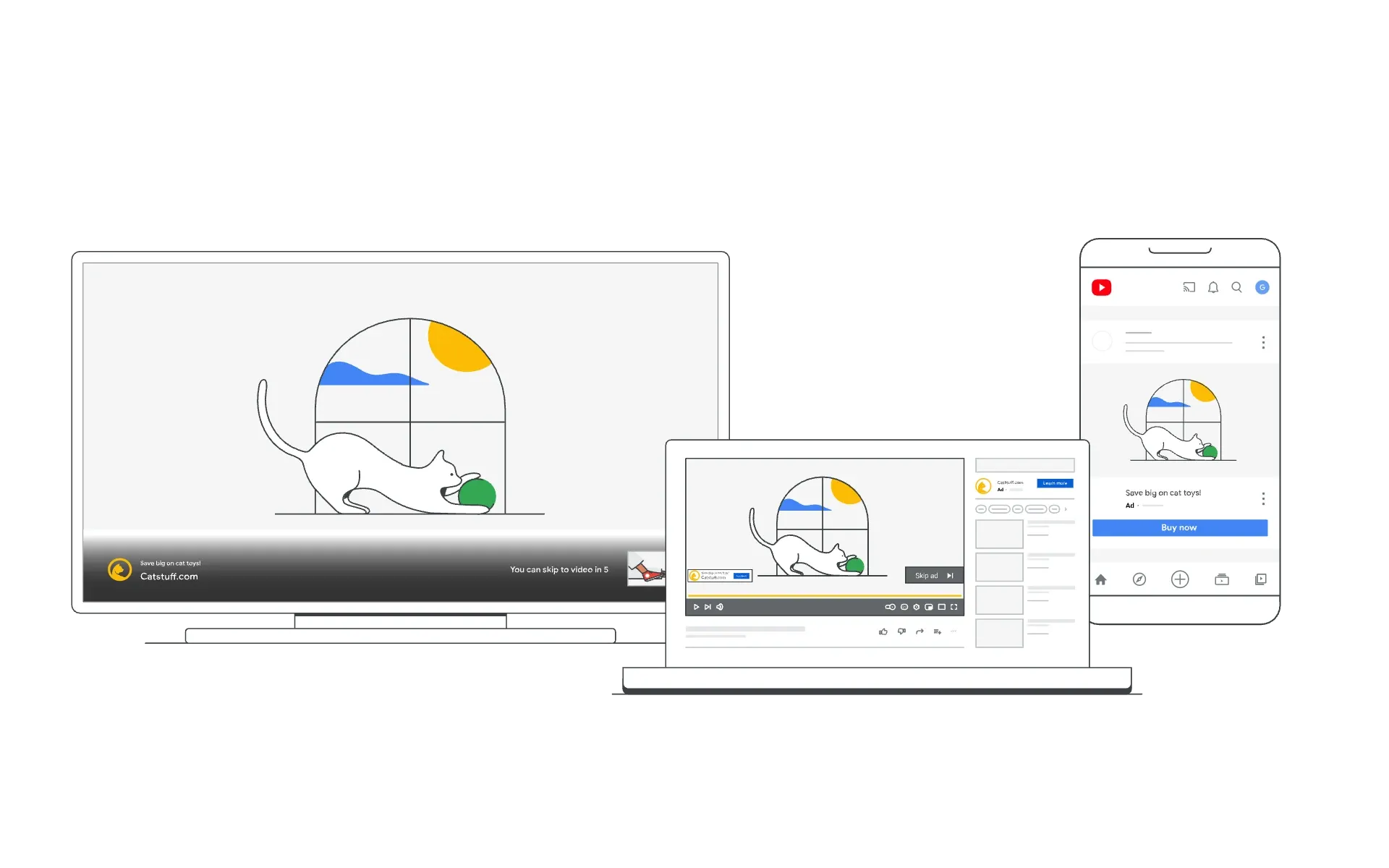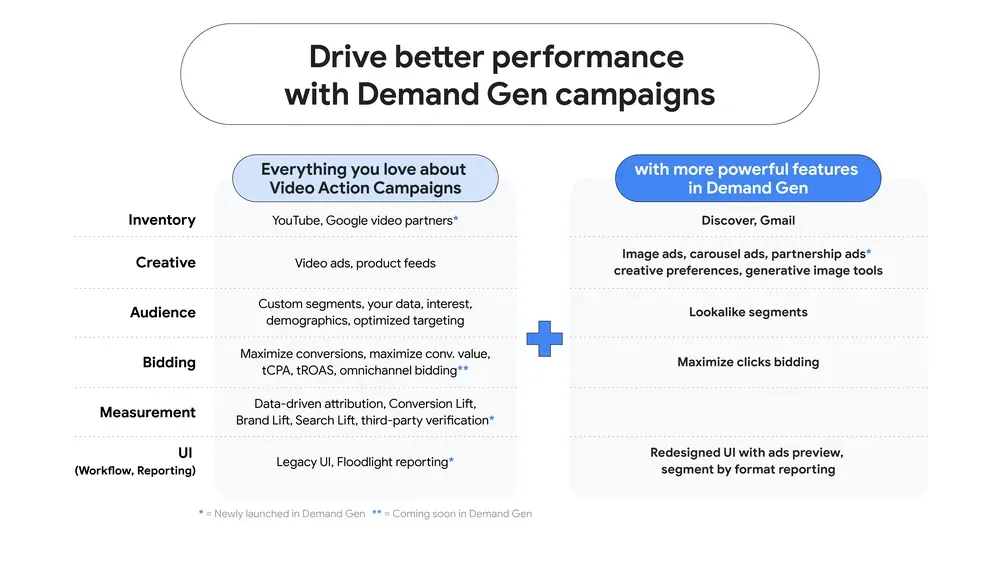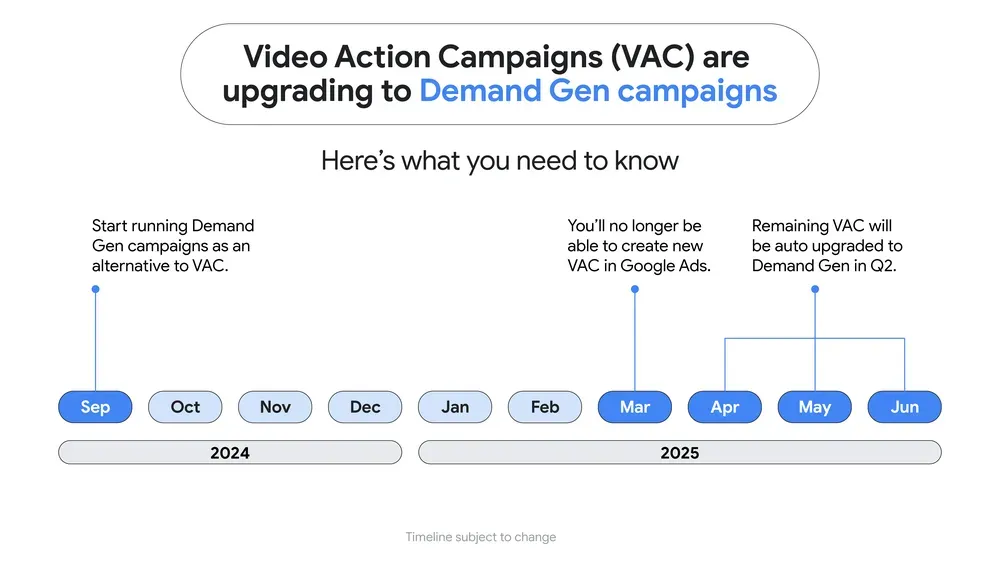Google's Video Action campaigns to merge with Demand Gen
Google announces major upgrade for Video Action Campaigns, merging with Demand Gen to offer expanded reach and features.

Google yesterday unveiled plans to upgrade its Video Action Campaigns to Demand Gen campaigns, a move set to reshape digital advertising strategies. The announcement, made by Michael Levinson, Vice President and General Manager of Social, Local and Vertical Ads at Google, outlines a significant shift in how advertisers will engage with audiences across multiple platforms.
According to the official Google Ads blog post, this transition is scheduled to begin in Q2 2025. The upgrade aims to combine the strengths of Video Action Campaigns with the expanded capabilities of Demand Gen campaigns, offering advertisers a more comprehensive toolkit to drive conversions and reach potential customers.
The move comes as a response to evolving consumer expectations for multi-format content experiences throughout their purchasing journey. By merging these two campaign types, Google seeks to provide advertisers with a more robust solution to capture emerging demand and foster business growth.
One of the key benefits highlighted in the announcement is the potential for improved performance. According to Google, advertisers who have already adopted a multi-format strategy within Demand Gen campaigns have seen significant results. Those who uploaded both video and image assets to Demand Gen campaigns experienced 20% more conversions at the same cost per action compared to those who only used video assets.

The upgrade brings several new features and enhancements to the table:
- Expanded Reach: Advertisers will now have the opportunity to engage with up to 3 billion monthly users. This expanded reach extends beyond YouTube to include Discover and Gmail platforms, providing a broader audience base for campaigns.
- Multi-Format Creative Storytelling: The new system allows for the simultaneous running of video and image ads within a single campaign. This flexibility enables advertisers to tailor their creative approach to different platforms and audience preferences. Additionally, advertisers will gain access to granular insights segmented by format, facilitating more effective creative optimization.
- Partnership Ads: A new feature powered by BrandConnect will allow advertisers to incorporate content from creators directly into their campaigns, potentially increasing engagement and authenticity.
- Creative Preferences: Advertisers will have greater control over the placement of their video assets across various surfaces. For instance, if an ad created with a popular YouTube Shorts creator is part of the campaign, it can be pinned to appear more frequently on that platform.
- Enhanced Audience Targeting: The introduction of Lookalike segments aims to help advertisers reach audiences with similar characteristics to their existing customer base, potentially improving targeting precision and campaign effectiveness.
To ease the transition, Google is implementing a phased approach:
- As of September 2024, advertisers are encouraged to start running Demand Gen campaigns alongside their existing Video Action Campaigns.
- In early 2025, Google plans to introduce a migration tool to help advertisers manually upgrade their Video Action Campaigns to Demand Gen, preserving historical settings and learnings.
- Starting March 2025, the creation of new Video Action Campaigns in Google Ads will no longer be possible.
- In Q2 2025, all remaining Video Action Campaigns will be automatically upgraded to Demand Gen campaigns.

Google is also working to bring popular features from Video Action Campaigns to Demand Gen. These include omnichannel bidding (available in beta in the coming months), support for buying Demand Gen campaigns in Display and Video 360 (rolling out in October), and third-party verification with YouTube brand safety partners and Google video partners inventory.
The announcement has sparked discussions within the digital marketing community. Some industry professionals, such as Olivia Kory, an Incrementality Testing expert, have expressed concerns about the level of control advertisers will have over their campaigns. Kory likened the change to the transition to Performance Max (PMAX) or Universal App Campaigns (UAC), where advertisers have less direct control over inventory placement.
However, Google maintains that advertisers using only video ads within Demand Gen campaigns have seen similar conversions to their Video Action Campaigns at a comparable cost per action. This suggests that the transition may not negatively impact performance for those who choose not to utilize the full range of new features.
To support advertisers through this transition, Google has announced several resources:
- A webinar scheduled for later in September 2024, featuring product experts who will provide tips and insights on upgrading to Demand Gen campaigns.
- Updated documentation in the Google Ads Help Center.
- A creative excellence guide and best practices guide for creating new Demand Gen campaigns.
- An FAQ page to address common questions about the upgrade process.
This move by Google represents a significant shift in how video-based advertising campaigns will be managed and optimized. Advertisers are encouraged to familiarize themselves with Demand Gen campaigns well in advance of the mandatory transition in 2025.
Key facts
Google announced the upgrade of Video Action Campaigns to Demand Gen on September 4, 2024.
The transition is scheduled to begin in Q2 2025.
Advertisers using both video and image assets in Demand Gen saw 20% more conversions at the same cost per action.
The upgrade offers expanded reach to up to 3 billion monthly users across YouTube, Discover, and Gmail.
New features include multi-format creative storytelling, partnership ads, creative preferences, and enhanced audience targeting.
A phased approach for the transition will begin in early 2025, with automatic upgrades occurring in Q2 2025.
Google is providing resources including webinars, updated documentation, and guides to support advertisers through the transition.

